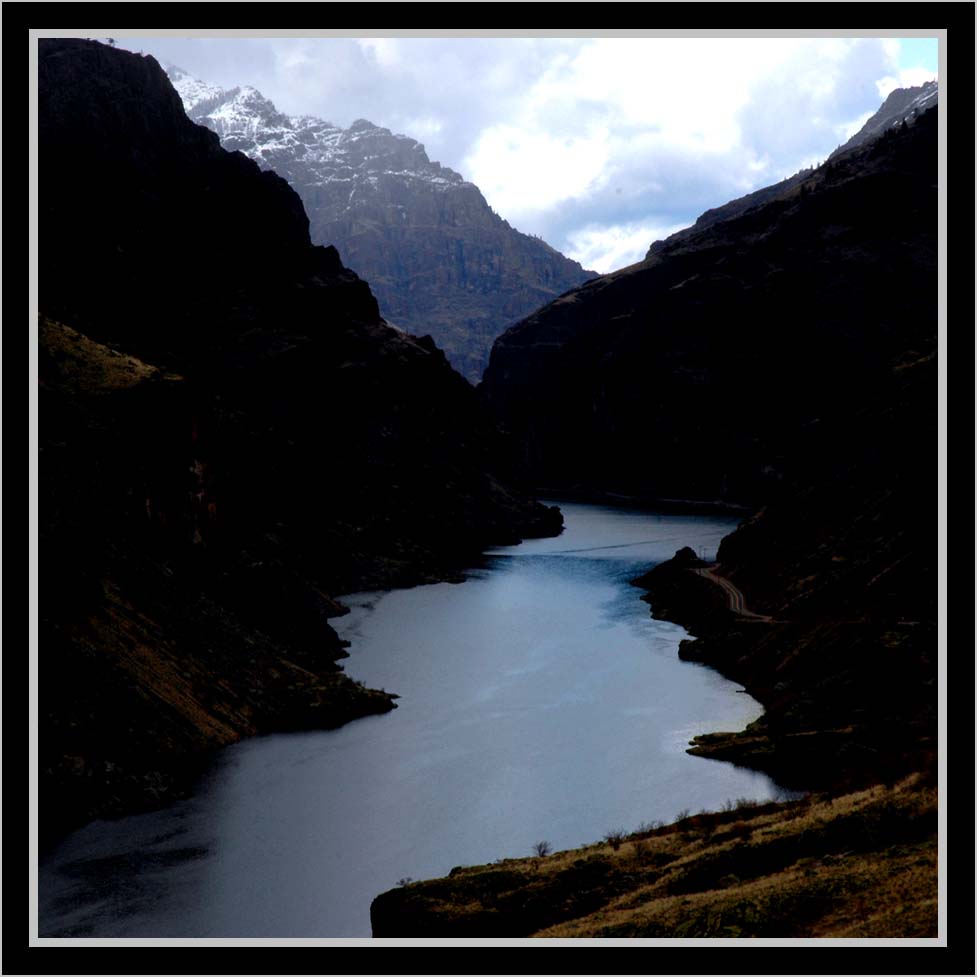

ENTERING HELLS CANYON, from the South,
March aspect, from the Idaho side . . . [ click photo for next ]
On the road in the Northwest of America.


ENTERING HELLS CANYON, from the South,
March aspect, from the Idaho side . . . [ click photo for next ]
On the road in the Northwest of America.
[ double-click to play text ]
ALPINE SIMPLICITY / COMPLEXITY
Mountains teach us in a powerful way about the necessary complemen-
tarity of the simple and the complex. The higher we go, the simpler and
more pristine the alpine environment becomes, moving from smooth,
polished granite surfaces, over snow and ice fields, through the low,
gnarled clusters of steadfast stonepines, to the smallest ensembles of
brightly colored cushion pinks and asters. Yet our view grows in width
and breadth in an ever-expanding circle with each passing step. Reach-
ing at last the peak where all points of the universe seem to converge,
we can see perhaps as much as 80 kilometers in all directions. This
gives one, I’ve always felt, a powerful sense of the mystery of the infi-
nite, the unknowable complexity of the whole. And yet, as we descend
from our climb, as we always must, the simple is there to embrace us
again. Perhaps it’s the rhythmic sound of our boots on crushed rock,
or the smell of large pines as we reach the forest below, or the baroque
flourishes of a solitary wood thrush repeated with a clocklike regularity,
10 to a minute, every six beats or so. The details vary with the individu-
al. The pattern, however, is eternal—this harmonious back and forth of
the simple and the complex.
LEARNING MAKES THE CIRCLE ROUND
Master the complex to teach the simple;
Teach the simple to master the complex.
Learning naturally moves from general to particular and back again
in a gentle, unforced, cyclical fashion. It is gentle because details are
studied only as they become necessary and relevant; and it is cyclical
because it moves back and forth from broad overview to the fine grain
of particulars and then back to broad overview, like moving easily
from mountain peak to valley and back again. In this way, learning
does not so much imitate Nature as do what Nature itself does.
After all, the many different species of willow and oak, so hard to dis-
tinguish one from the other, only very gradually developed into such
wonderfully complex diversity.
A NECESSARY UNITY
Art, Science, Religion:—three branches of
one great river of life.
See the promise of the spiritual energy released
if they were to flow freely, naturally together.
See also the tragedy of their current fragmentation.
The energy wasted, the opportunity, lost.
The necessity of unity says, “Take down the dams!”
THE LITTLE CLAVIER please preview 150 of 631 pages
w/ my black & white photography [opens in new window]
Follow @cliffcrego
Featured gallery, mountain water . . . .Please visit my Living Water Gallery—some of
the best of my flowform photography w/ a selection of the highest quality
prints & frames . . . [ mouse over for controls / lower right fro full-screen ]
All Photographs & texts by Cliff Crego © 1999 -2012 picture-poems.com
(created: III.15.2012)